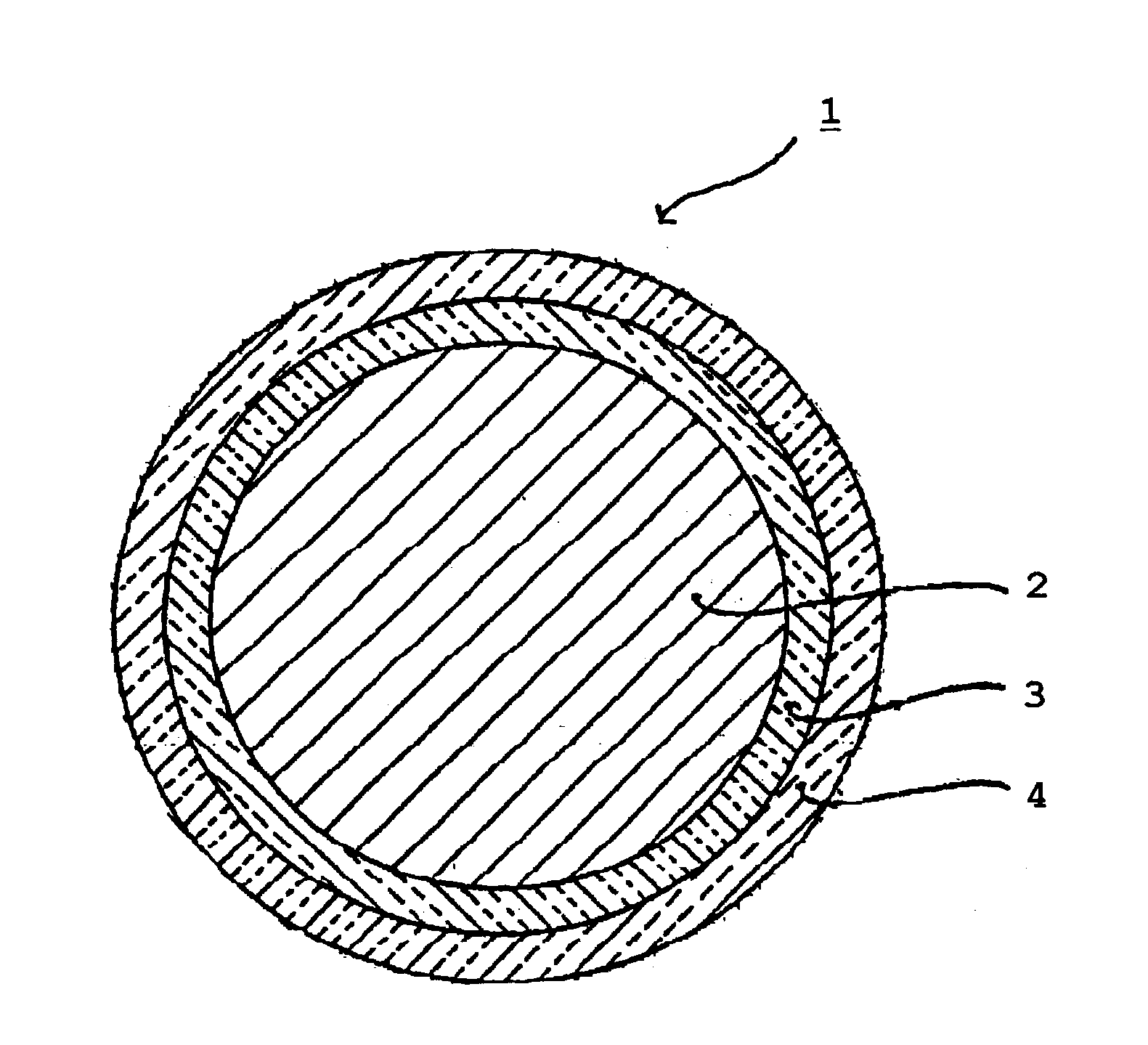Method of manufacturing an enamel having a low coefficient of friction, and an electrical conductor coated in such an enamel
- Summary
- Abstract
- Description
- Claims
- Application Information
AI Technical Summary
Benefits of technology
Problems solved by technology
Method used
Image
Examples
example 1
[0028] In this example, the grafted polysiloxane is for use in synthesizing polyamide-imide.
[0029] 0.15 moles of acid functionalized polysiloxane and 1.5 moles of diphenylmethane di-isocyanate (MDI) constituting the first functionalized monomer are introduced into 1000 grams (g) of N-methylpyrolidone at 80.degree. C.
[0030] The mixture is heated to 190.degree. C. and stirred at said temperature for 2 hours. This produces a functionalized polysiloxane oligomer, i.e. comprising isocyanate functional groups.
[0031] The solution is then cooled to 120.degree. C. and 1.2 moles of trimellitic anhydride (TMA) are added at the second functionalized monomer. The mixture is heated to 160.degree. C. for 2 hours. A polysiloxane is obtained that is grafted with short organic chains identical to those of the final polyamide-imide enamel.
[0032] 0.3 moles of polysiloxane are then reacted by heating the mixture to 190.degree. C. and then stirring the mixture at said temperature for 1 hour.
[0033] The re...
example 2
[0034] In this example, the grafted polysiloxane is for use in the synthesis of the polyamide.
[0035] 0.15 moles of acid functionalized polysiloxane and 1.5 moles of MDI as the first functionalized monomer are added into 1000 g of N-methylpyrrolidone at 80.degree. C.
[0036] The mixture is heated to 190.degree. and stirred at said temperature for 2 hours. A functionalized polysiloxane oligomer is obtained, i.e. comprising isocyanate functional groups.
[0037] The solution is then cooled to 120.degree. C. and 1.2 moles of terephthalic acid (TPA) as the second functionalized monomer are added. The mixture is heated to 160.degree. C. for 2 hours and stirred at said temperature for 1 hour. This produces a polysiloxane grafted with short organic chains identical to those of the final polyamide enamel.
[0038] 0.3 moles of polysiloxane are then caused to react by heating the mixture to 190.degree. C., and the mixture is then stirred at said temperature for 1 hour.
[0039] The resulting diacid is t...
example 3
[0040] In this example, the grafted polysiloxane is for use in synthesizing polyester or polyester-imide.
[0041] 0.15 moles of acid functionalized polysiloxane and 1.5 moles of methyl ethyl glycol as the first functionalized monomer are added into 1000 g of cresol. A functionalized polysiloxane oligomer is obtained, i.e. comprising alcohol functional groups.
[0042] After the reaction, 1.2 moles of terephthalic acid (TPA) as the second functionalized monomer are added to the solution. The mixture is allowed to react to form an alcohol-grafted polysiloxane with short organic chains identical to those of the final polyester or polyester-imide enamel.
[0043] 0.3 moles of polysiloxane are then caused to react.
[0044] The diacid formed in this way is then introduced into the synthesis of the polyester or polyester-imide that is involved in synthesizing polyurethanes, replacing a varying fraction of the usual diacids.
[0045] Here again the synthesis is entirely conventional and well known to th...
PUM
 Login to View More
Login to View More Abstract
Description
Claims
Application Information
 Login to View More
Login to View More - R&D
- Intellectual Property
- Life Sciences
- Materials
- Tech Scout
- Unparalleled Data Quality
- Higher Quality Content
- 60% Fewer Hallucinations
Browse by: Latest US Patents, China's latest patents, Technical Efficacy Thesaurus, Application Domain, Technology Topic, Popular Technical Reports.
© 2025 PatSnap. All rights reserved.Legal|Privacy policy|Modern Slavery Act Transparency Statement|Sitemap|About US| Contact US: help@patsnap.com

